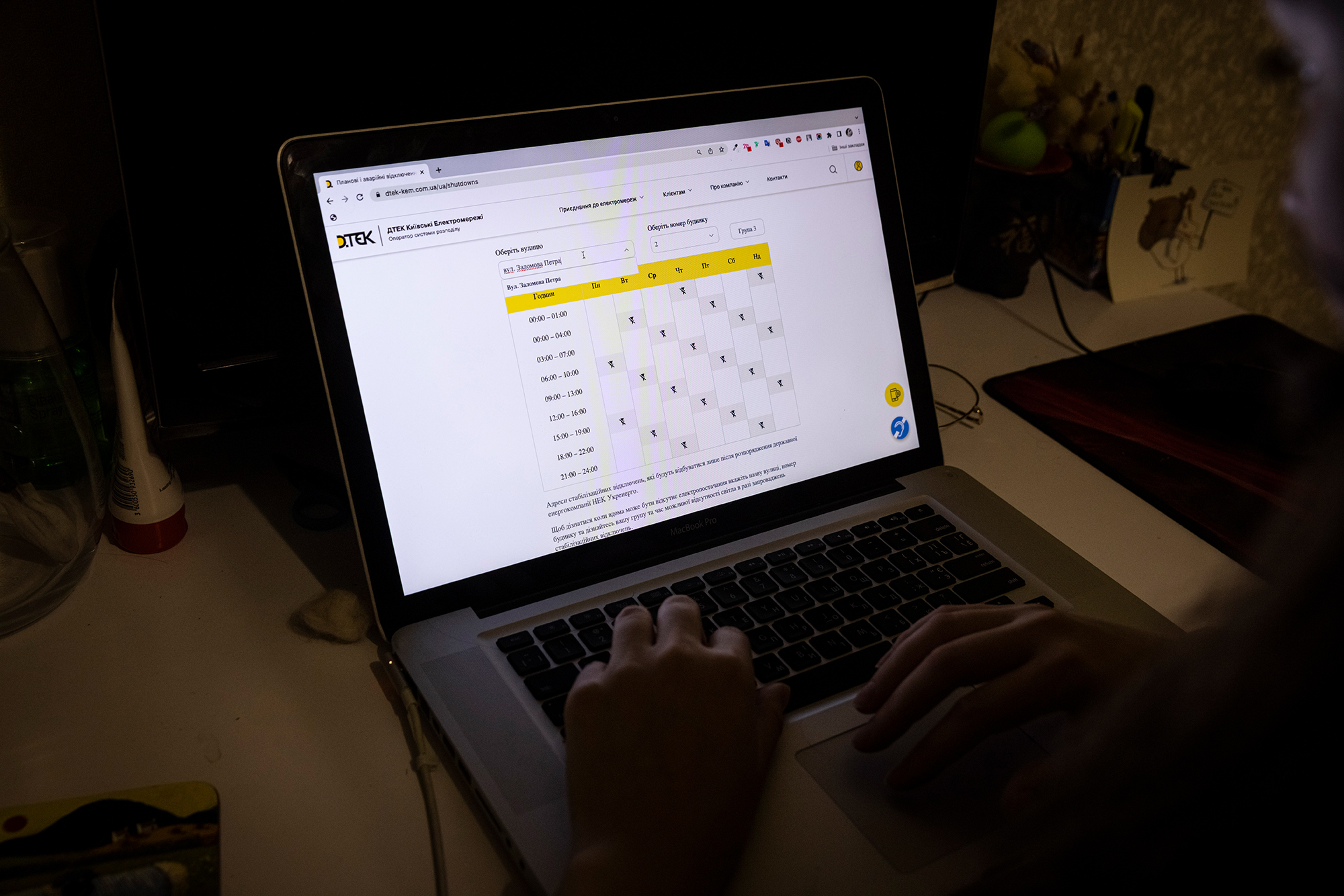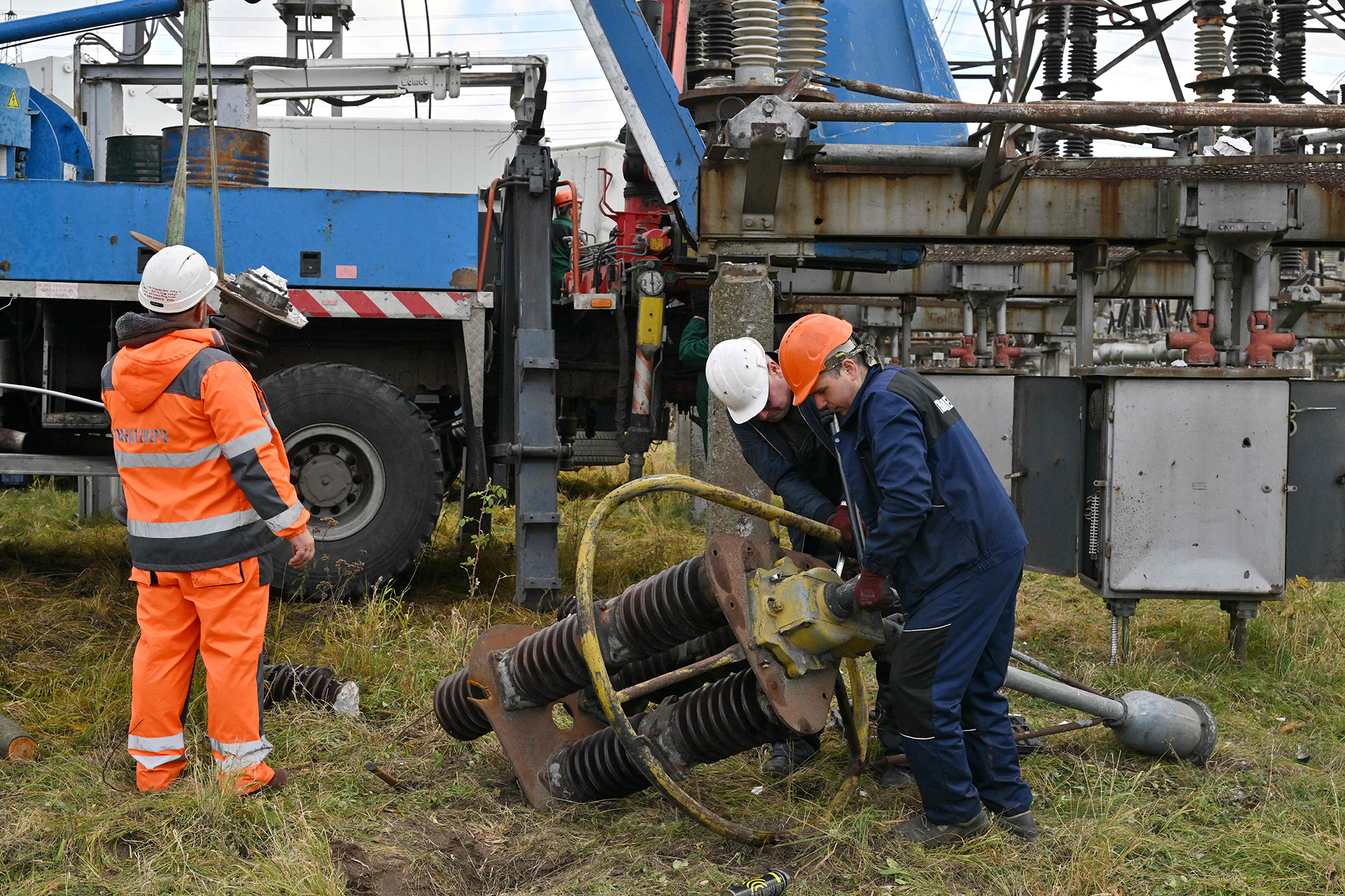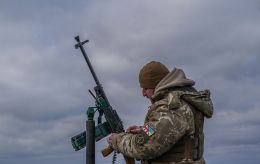Ukraine faces potential blackout: Authorities discuss possible schedules and shutdowns
 Blackout schedules may be introduced due to damage to energy facilities (Photo: Getty Images)
Blackout schedules may be introduced due to damage to energy facilities (Photo: Getty Images)
As the cold weather approaches, Ukrainians are actively discussing the possibility of blackouts, as Russia may once again resort to terrorizing critical infrastructure. However, the authorities assure that this year's energy sector is more secure, and it will be much harder for the occupiers to organize a blackout, informs RBC-Ukraine.
The following sources were used to prepare the material: Facebook posts of the press services of NPC Ukrenergo and the Ministry of Energy of Ukraine, a statement by Deputy Chief of the Defense Intelligence of Ukraine Vadym Skibitskyi, a representative of the Defense Intelligence of the Ministry of Defense, statements by Minister of Energy Herman Halushchenko, Head of Ukrenergo Volodymyr Kudrytskyi, and Deputy Minister of Energy Yaroslav Demchenkov.
Intelligence warns of new Russian attacks
Last year, Russian troops massively shelled energy facilities across Ukraine, causing power outages. People were forced to live according to blackout schedules.
The occupants are likely to try to repeat the attacks in the same scenario this winter. The Defense Intelligence of Ukraine (DIU) suggests that the Russians may have taken into account the experience of 2022 when they launched almost half of the missiles before the onset of cold weather. Therefore, this year's attacks may begin with a drop in air temperature to cause the greatest damage to the power grid. After all, the lower the temperature, the greater the load and the more critical the damage can be.
In addition, the tactics of the attacks may differ. According to Defense Intelligence, the attacks will not be so "primitive". Ukraine has strengthened its air defense, and in response, the enemy can use more ballistic missiles, which are more difficult to shoot down and launch drones and missiles simultaneously.
Will the lights be back on schedule?
Amid predictions of a new Russian missile terror, fake blackout schedules have begun to spread online. However, the Ministry of Energy and Ukrenergo denied that any restrictions had been imposed on household consumers.
The Ministry of Energy called the information about the schedules part of the enemy's Psychological operations (PSYOP).
"We emphasize that blackouts are possible only in the event of massive enemy shelling and, as a result, damage to power equipment," the ministry said in a statement.

Photo: schedules will be introduced only in case of massive shelling of energy infrastructure (Getty Images)
Ukrenergo has officially stated that it does not plan any consumption restrictions shortly, as the current state of the power system gives no reason to introduce outage schedules.
At the same time, the company explained that even before the war, Ukraine annually approved schedules of planned and emergency power outages in case of emergencies. They are needed to ensure that the energy sector has a plan of action in case of an accident, power shortage, or other force majeure.
Restrictions are used only when necessary, and one should not confuse the "approval" of schedules with "implementation".
"A blackout schedule is a procedure for disconnecting power lines of regional power distribution companies that supply consumers in turn. The schedule is applied only when necessary. It is like a duty schedule in case of an emergency in an organization or, for example, a fire evacuation plan. They should be in every office, but their presence does not mean that an emergency or fire has already occurred," Ukrenergo added.
Under what conditions is a blackout possible?
The Ministry of Energy names three factors that may lead to blackouts:
- massive shelling of Ukrainian energy facilities;
- potential damage to critical infrastructure as a result of enemy attacks;
- the factor of nature (damage in case of bad weather).
According to Energy Minister Herman Halushchenko, there is a risk of a blackout in case of strikes on the power system, but the blackout will not be long.
"Of course, if there are massive strikes that cause significant damage to the power system, blackouts are possible. But we are preparing everything to ensure that they are... they will be short-lived and restored as quickly as possible," he emphasized.
How ready is the power system?
Although the likelihood of a terrorist attack on critical infrastructure is high, authorities say that a critical situation will be avoided this year.
Much of the damage has been repaired, backup equipment has been prepared, repair crews have been trained, energy facilities are more secure due to the strengthening of air defense, and engineering fortifications have been created.

Photo: power engineers managed to repair critical damage (Getty Images)
On the eve of the heating season, the Government reported on the formation of multi-level protection for energy facilities. "The winter will be difficult, but we must survive. We are preparing everything necessary for this," said Prime Minister Denys Shmyhal.
In October, Ukrenergo CEO Volodymyr Kudrytskyi said that the Ukrainian power system has no restrictions on the network and electricity transportation. The company is ready to transport winter volumes. In his opinion, there may be difficulties due to the shelling, but the system will not collapse and will continue to operate.
The Ministry of Energy also confirmed the information about readiness for the cold weather. The ministry said that all units of nuclear power plants located in the government-controlled territory of Ukraine will operate in winter. In addition, there are additional capacities in reserve that will be put into operation in case of an increase in electricity consumption and demand.
How power facilities will be protected
Ukraine's power facilities will have three levels of protection against attacks in the form of engineering fortifications.
Volodymyr Kudrytskyi, CEO of Ukrenergo, spoke about the elements of such a defense system:
- The first level is for protection against blast waves or indirect attacks by the Shahed (gabions - sandbags fastened with metal cages);
- the second level - structures to protect against direct drone strikes;
- the third level - large-scale structures for combined protection against missile and Shahedi attacks.
To protect transformers at substations, concrete block walls were built. Cylindrical cages filled with sand and stones are also used. Prime Minister Denys Shmyhal told the Financial Times about these "on-the-ground" protections. The Prime Minister emphasized that such blocks and cages protect in 80-90% of cases, especially from drones and their fragments.
Over the past year, Ukraine's air defense has become much stronger, and this should help minimize damage from possible attacks by the occupiers. However, Energy Minister Herman Halushchenko emphasizes the need to further strengthen air defense, as this is the best way to reliably protect the power system.
.

